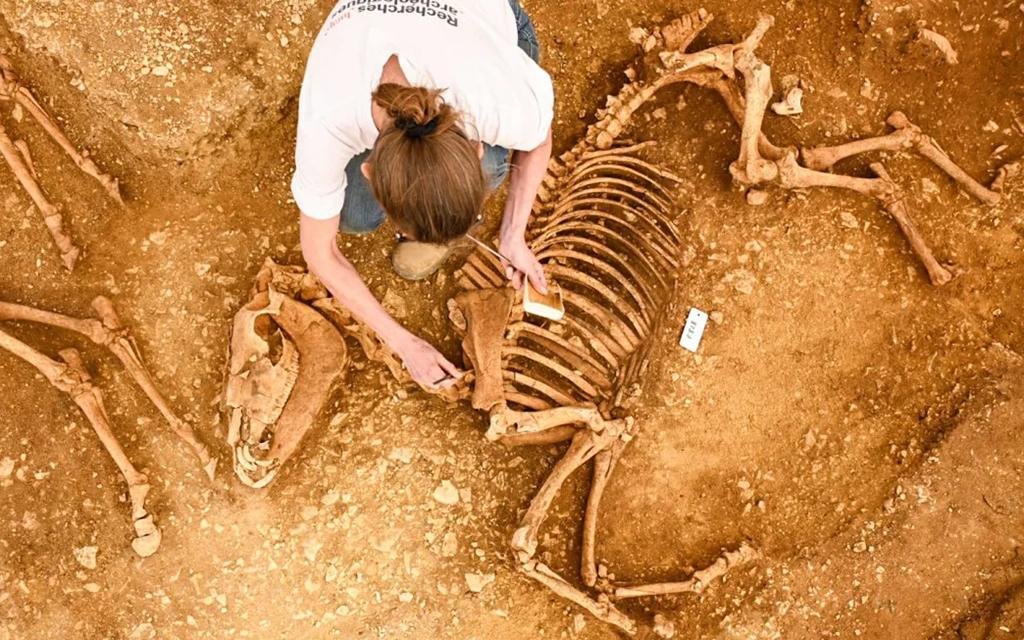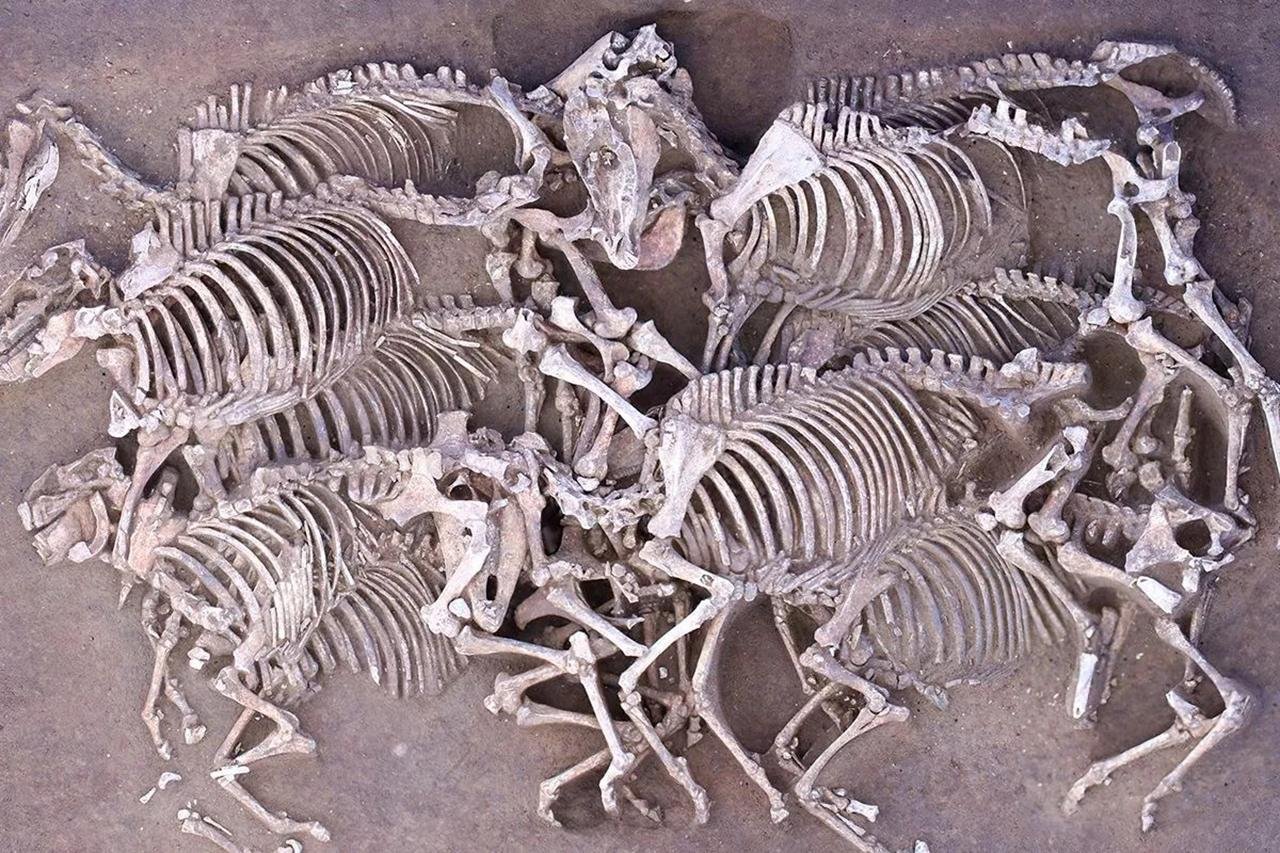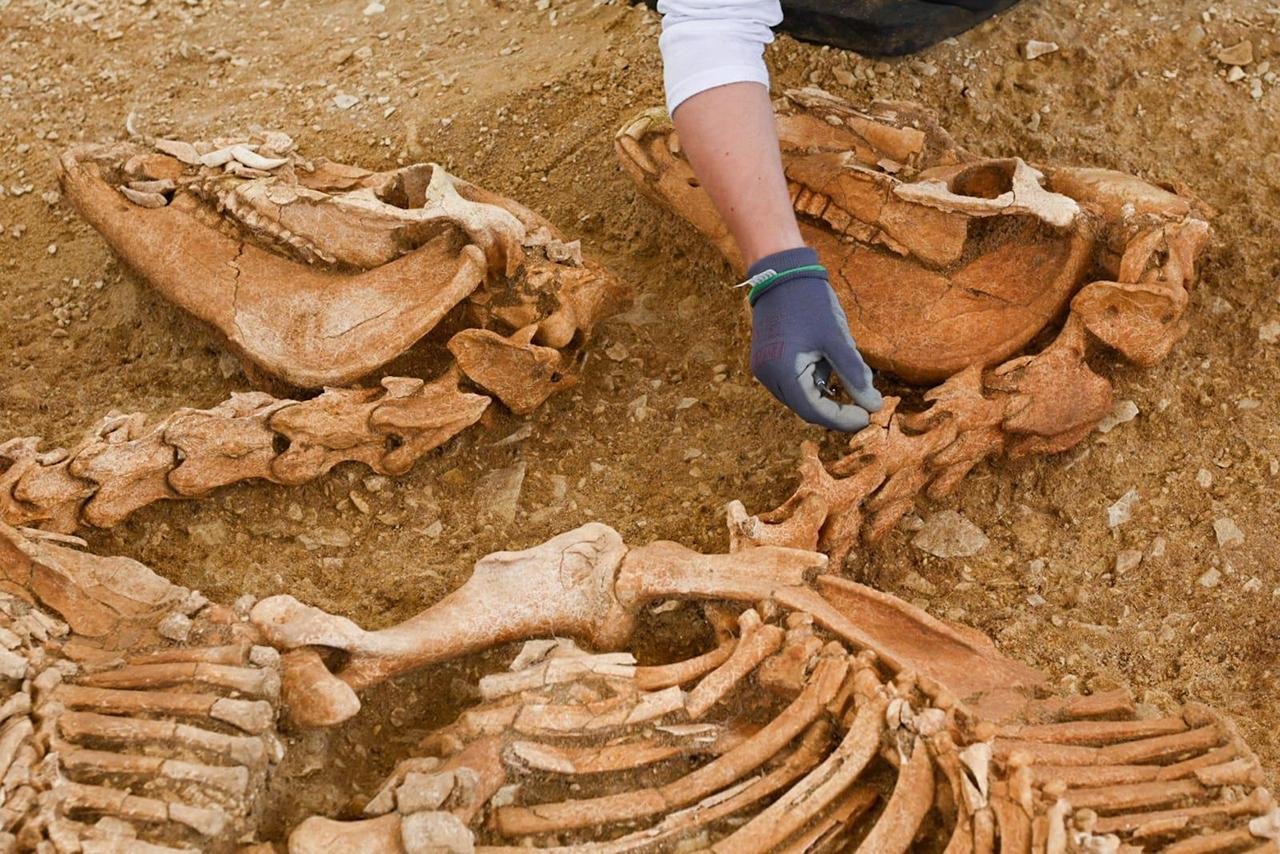Archaeologists in the commune of Villedieu-sur-Indre in central France have uncovered nine graves containing the remains of 28 horses dating back approximately 2,000 years.

The excavation, conducted by the French National Institute for Preventive Archaeological Research (INRAP), revealed that the horses were carefully interred shortly after their deaths, with their bodies arranged in a remarkable display.
The horses, all identified as adult males over four years old, were meticulously buried in pits, with 10 complete skeletons found in one grave and two in another. Each horse was placed on its right side, facing south, suggesting a deliberate and organized burial process. Additionally, the remains of two medium-sized dogs were discovered in a separate pit, positioned similarly with their heads facing west.

Carbon dating places the horses’ remains within the timeframe of the Gallic wars, between 100 BCE and 100 CE, a period marked by significant historical events in ancient Gaul. However, the exact cause of the horses’ deaths remains uncertain. While researchers have ruled out the possibility of an epidemic due to the absence of foals and mares among the remains, they are exploring two main hypotheses: that the horses were either killed in battle or sacrificed as part of a ritual.

Isabelle Pichon, head of the archaeological operation for INRAP, acknowledges the complexity of unraveling this mystery. “We think because of where they were buried that they were linked to the Gallic wars waged by Julius Caesar in the 1st century B.C., but this is still just a theory,” she told The Guardian. “We know there was an important battle and the Roman army passed not far from here, but we have so little evidence and so far we have found nothing to indicate how they died.” Pichon also considers the possibility of a ritual burial, noting the absence of accompanying objects in the graves.
The staging of the horse burials bears resemblance to earlier discoveries in France, including a Celtic burial site in Gondole, where warriors and horses were interred together. This parallel raises questions about the potential cultural significance of such burials and their association with prominent figures or events in ancient society.

The meticulous care with which the horses were buried suggests a level of reverence and importance attached to these animals, whether in life or death.


































